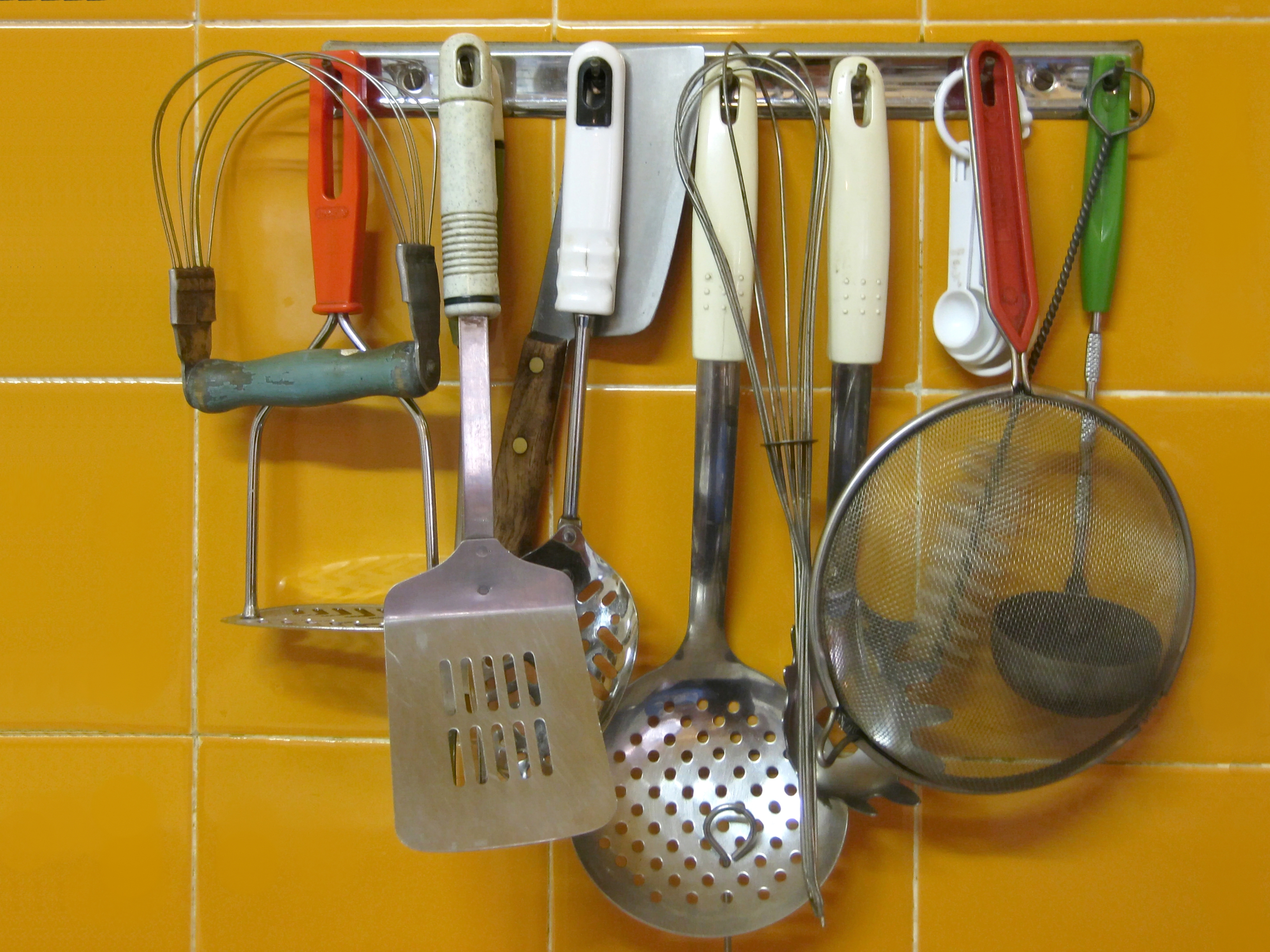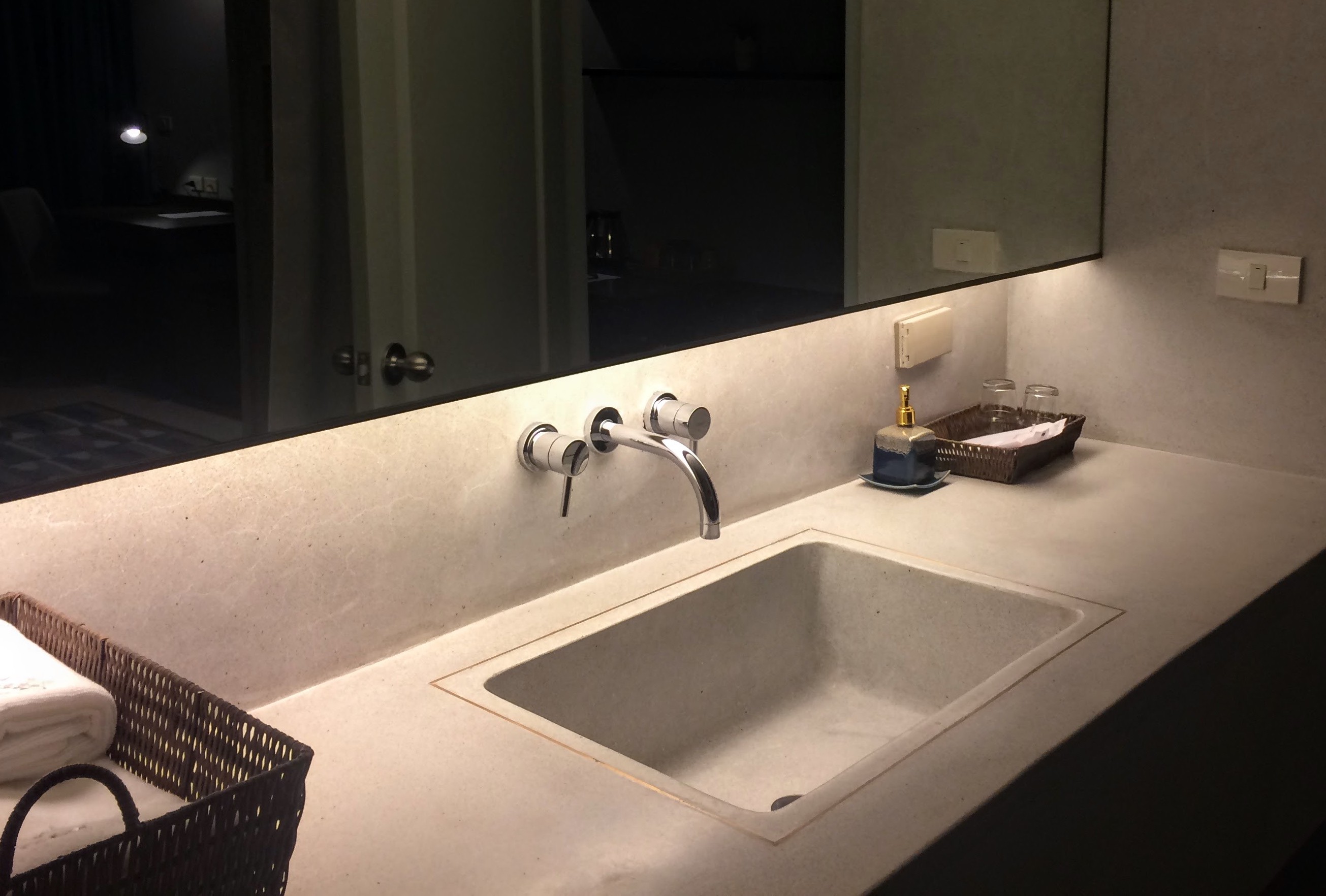|
Gastronorm
Gastronorm (GN), sometimes spelled Gastro-Norm, is a European standard for kitchenware tray and container sizes that is commonly seen worldwide in the catering and professional food industry, as well as in certain parts of the high-end consumer market. Gastronorm is generally used worldwide except in most of the United States and Canada, which have their own domestic systems. The Gastronorm standard was first introduced in Switzerland in 1964 and became an official European standard in 1993 with the EN 631 standard. The basic format is called "GN 1/1" and measures 530×325 mm, with other Gastronorm sizes being multiples and submultiples of this basic module size. Gastronorm containers allow for flexible, place efficient, and compatible storage, transport, processing, and serving and can be adapted for shelving, transport on trolleys and conveyor belts, secure temporary placement in compatible sinks, working tables, refrigerators, freezers, ovens, hot water baths, and compat ... [...More Info...] [...Related Items...] OR: [Wikipedia] [Google] [Baidu] |
Sheet Pan
A sheet pan, also referred to as baking tray, baking sheet, or baking pan, is a flat, rectangular metal pan placed in an oven and used for baking pastry, pastries such as bread rolls, cookies, sheet cakes, Swiss rolls, and pizzas. These pans, like all Cookware and bakeware#Bakeware, bakeware, can be made of a variety of materials. Originally made of sheet iron, today's baking trays are made of either aluminum or sheet steel that has been enameled or coated with polytetrafluoroethylene, PFAS. Common features that may be found in sheet pans include: one or more flat edges to assist food removal, one or more raised edges (lips) to retain food, a contiguous rim to retain either food or shallow liquid, handles to assist in moving the pan into and out of the oven, a layer of insulation (typically air) designed to protect delicate food from burning (air bake pan), or perforations to aid in speeding cooking (pizza tray). Rigidity of the pan is especially important if the pan is to be pl ... [...More Info...] [...Related Items...] OR: [Wikipedia] [Google] [Baidu] |
Tray
A tray is a shallow platform designed for the carrying of items. It can be fashioned from numerous materials, including silver, brass, sheet iron, paperboard, wood, melamine, and molded pulp. Trays range in cost from inexpensive molded pulp trays which are disposable and inexpensive melamine trays used in cafeterias, to mid-priced wooden trays used in a home, to expensive silver trays used in luxury hotels. Some examples have raised galleries, handles, and short feet for support. Trays are flat, but with raised edges to stop things from sliding off them. They are made in a range of shapes but are commonly found in oval or rectangular forms, sometimes with cutout or attached handles with which to carry them. A more elaborate device is the tray table, which is designed to accommodate a tray, or to serve as a tray itself. There are two primary kinds of tray tables. The TV tray table is typically a small table, which may have legs that fold to allow it to be carried like a tray. ... [...More Info...] [...Related Items...] OR: [Wikipedia] [Google] [Baidu] |
Kitchenware
:'' For a record label, see Kitchenware Records'' Kitchenware refers to the tools, utensils, appliances, dishes, and cookware used in food preparation and the serving of food. Kitchenware can also be used to hold or store food before or after preparation. Types Kitchenware encompasses a wide range of tools. Some of the most common items of kitchenware are: See also * Batterie de cuisine * Cookware and bakeware * Gastronorm, a European size standard for kitchenware * Eurobox, a European size standard for storage and transport * List of cooking vessels * List of eating utensils * List of food preparation utensils * List of glassware * List of Japanese cooking utensils * List of serving utensils * List of types of spoons * NSF International, formerly "National Sanitation Foundation" * Tableware Tableware items are the dishware and utensils used for setting a table, serving food, and dining. The term includes cutlery, glassware, serving dishes, serving ut ... [...More Info...] [...Related Items...] OR: [Wikipedia] [Google] [Baidu] |
Combi Steamer
Combi steamers (also called combi-steamers, hot-air steamers, combination steam-convection ovens, or simply combi ovens) are combination ovens that expand upon standard convection ovens in that they can also generate conventional moist steam or superheated steam and are capable of shifting between cooking modes automatically during the cooking process.Schudel, Walter (2005). ''Betrieb''. Lehrbuch der Küche. p. 43. They can be used to simultaneously steam vegetables or potatoes quickly and gently, while also roasting or braising meat and fish, or baking bread. The appliance is fit for many culinary applications, including baking, roasting, grilling, steaming, braising, Blanching (cooking), blanching and Poaching (cooking), poaching. These devices are cooking appliances typically used in professional catering or food service operations. They help gastronomy-industry professionals bridge the gap between economy and menu diversity while also maintaining the desired food quality.Pasch ... [...More Info...] [...Related Items...] OR: [Wikipedia] [Google] [Baidu] |
Catering
Catering is the business of providing food services at a remote site or a site such as a hotel, hospital, pub, aircraft, cruise ship, park, festival, filming location or film studio. History of catering The earliest account of major services being catered in the United States was an event for William Howe of Philadelphia in 1778. The event served local foods that were a hit with the attendees, who eventually popularized catering as a career. The official industry began to be recognized around the 1820s, with the caterers being disproportionately African-American. The catering business began to form around 1820, centered in Philadelphia. Robert Bogle The industry began to professionalize under Robert Bogle who is recognized as "the originator of catering." Catering was originally done by servants of wealthy elites. Butlers and house slaves, who were often black, were in a good position to become caterers. Essentially, caterers in the 1860s were "public butlers" as they orga ... [...More Info...] [...Related Items...] OR: [Wikipedia] [Google] [Baidu] |
Sink
A sink (also known as ''basin'' in the UK) is a bowl-shaped plumbing fixture for washing hands, dishwashing, and other purposes. Sinks have a tap (faucet) that supplies hot and cold water and may include a spray feature to be used for faster rinsing. They also include a drain to remove used water; this drain may itself include a strainer and/or shut-off device and an overflow-prevention device. Sinks may also have an integrated soap dispenser. Many sinks, especially in kitchens, are installed adjacent to or inside a counter. When a sink becomes clogged, a person will often resort to using a chemical drain cleaner or a plunger, though most professional plumbers will remove the clog with a ''drain auger'' (often called a " plumber's snake"). History United States The washstand was a bathroom sink made in the United States in the late 18th century. [...More Info...] [...Related Items...] OR: [Wikipedia] [Google] [Baidu] |
Salad Bar
A salad bar is a buffet-style table or bar where customers can create their own salad plates from individual salad ingredients or completed dishes. Salad bars are commonly found in restaurants, food markets, and cafeterias. Salad bars are a popular dining option in many countries around the world, but they are applied in different ways depending on the local culture and cuisine A cuisine is a style of cooking characterized by distinctive ingredients, List of cooking techniques, techniques and Dish (food), dishes, and usually associated with a specific culture or geographic region. Regional food preparation techniques, .... History The origins of the salad bar are unclear, but it is thought that the idea may have been sparked by the Swedish that was featured at the 1938 World's Fair in New York. By the early 1940s many U.S. newspapers' homemaking columnists had suggested the idea for family or guests ("why not serve the ingredients separately and allow each member to ass ... [...More Info...] [...Related Items...] OR: [Wikipedia] [Google] [Baidu] |
Plate (dishware)
A plate is a broad, mainly flat vessel on which food can be served. A plate can also be used for ceremonial or decorative purposes. Most plates are circular, but they may be any shape, or made of any water-resistant material. Generally plates are raised round the edges, either by a curving up, or a wider lip or raised portion. Vessels with no lip, especially if they have a more rounded profile, are likely to be considered as bowls or dishes, as are very large vessels with a plate shape. Plates are dishware, and tableware. Plates in wood, pottery and metal go back into Ancient history, antiquity in many cultures. In Western culture and many other cultures, the plate is the typical vessel from which food is eaten and on which it is served, provided the food is not too high in liquid content. Its primary alternative is the bowl. The banana leaf predominates in some South Asian and Southeast Asian cultures. Design Shape A plate is typically composed of: * The ''well'', the bo ... [...More Info...] [...Related Items...] OR: [Wikipedia] [Google] [Baidu] |
Dishwasher
A dishwasher is a machine that is used to clean dishware, cookware, and cutlery automatically. Unlike dishwashing, manual dishwashing, which relies on physical scrubbing to remove soiling, the mechanical dishwasher cleans by spraying hot water, typically between , at the dishes, with lower temperatures of water used for delicate items. A mix of water and dishwasher detergent is pumped to one or more rotating sprayers, cleaning the dishes with the cleaning mixture. The mixture is recirculated to save water and energy. Often there is a pre-rinse, which may or may not include detergent, and the water is then drained. This is followed by the main wash with fresh water and detergent. Once the wash is finished, the water is drained; more hot water enters the tub by means of an electromechanical solenoid valve, and the rinse cycle(s) begin. After the rinse process finishes, the water is drained again and the dishes are dried using one of several drying methods. Typically a rinse aid ... [...More Info...] [...Related Items...] OR: [Wikipedia] [Google] [Baidu] |
Bread Warmer
A bread warmer can describe a number of different devices used to keep bread from cooling too fast. Examples include baskets with cloths, ceramic disks, or cabinets placed over a heat source such as steam radiator A radiator is a heat exchanger used to transfer thermal energy from one medium to another for the purpose of cooling and heating. The majority of radiators are constructed to function in cars, buildings, and electronics. A radiator is always a ...s. See also * Biscuit warmer Kitchenware {{bread-stub ... [...More Info...] [...Related Items...] OR: [Wikipedia] [Google] [Baidu] |





